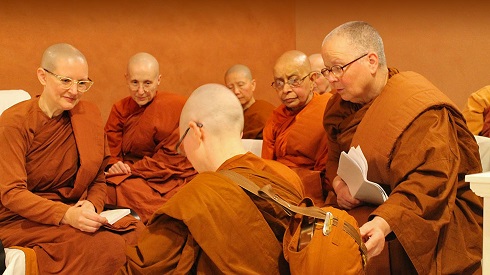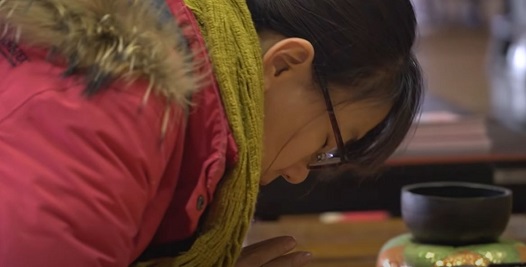When such a foolish person is dying, he encounters a good teacher and gives him all kinds of comfort, in order to teach the wonderful Dharma and instruct him to recite the Buddha . The good friend said, “If you can’t recite that Buddha, you should be called the Buddha of Infinite Life.” With such a sincere heart, he keeps his voice incessant recitations , he is called Namo Amitabha. Because of the name of the Buddha, in the thought of it, the sin of birth and death for eight billion kalpas is removed.
Category: buddhism
念佛就是修行 (“Chanting IS Practice”)
修行 = xiūxíng = “practice” = to cultivate one’s spiritual virtues; to train oneself; to work at self-improvement (wiktionary); to devote oneself to spiritual development (esp. Buddhism or Daoism); to devote oneself to perfecting one’s art or craft (purple culture)
Xuanzang’s Heart Sutra in Mandarin, Vietnamese, Japanese, and Korean
Buddhists throughout East Asia chant the version of the Heart Sutra that goes back to the legendary translator Xuanzang, who lived about 14 hundred years ago. That is to say, Buddhists in China, Vietnam, Japan, and Korea all use Xuanzang’s text, but they pronounce the 270 characters in that text differently. Below you can find […]
“Either discuss the Dharma together, or Noble Silence” (或共說法, 或聖默然)
或 = either
共 = together
說法 = discuss [the] Dharma
The image is from the website of The Alliance for Bhikkunis
https://www.bhikkhuni.net/projects/
“Kido” means “pray” (祈禱 기도)
羅季天成中, 正甫崔殷諴, 久無胤息, 詣玆寺大慈前祈禱.
translation: “During the ending [years] of the Silla in the Tiancheng era, Jeongbo Choe Eunham for a long time [had] no sons. So he went before the shrine of Kwan Seum Bosal (大慈) and prayed (祈禱).”
The Korean Heart Sutra
1—————————————————————————————–
摩 訶 般 若 波 羅 蜜 多 心 經
마 하 반 야 바 라 밀 다 심 경
ma ha ban ya ba ra mil ta shim gyong
2—————————————————————————————–
觀 自 在 菩 薩 行 深 般 若
관 자 재 보 살 행 심 반 야
kwan ja jae bo sal haeng shim ban ya
Jijang Bosal Chanting: The Text
8. Closing (Praising the Buddha’s Infinite Virtue and Merit)
刹塵 十念 可數知 大海 中水 可 飮盡
찰진 십염 가수지 대해 중수 가 음진
chaljin shibyeom gasuji daehae jungsu ga eumjin
虛空 可量 風可繫 無能 盡說 佛 功德
허공 가량 풍가계 무능 진설 불 공덕
heogong garyang punggagye muneung jinseol bul gongdeog
Shariputra (and the Buddha) on not accepting the Dharma merely on faith alone
The disciples who witnessed this criticized Shariputra, saying that he did not have faith in the Buddha. But the Buddha praised Shariputra for his answer. He explained to the disciples that they, too, must come to understand the Dharma through their own personal experience.
Kwan Seum Bosal Chanting: The Text
7. Mantra of Universal Dedication
普 回向 眞言
보 회향 진언
bo hohyang jinon
3x:
唵 娑摩囉 娑摩囉 弭摩曩 婆囉摩訶 左乞囉 嚩攞 吽
옴 삼마라 삼마라 미만나 사라마하 자거라 바라 훔
om samara samara mimana saramaha jageora bara hum
Kwan Seum Bosal Chanting Part Six: Repairing Mistakes (補闕眞言)
The mantra: 唵 好魯好魯 舍野謨契 娑婆訶
ǎn hǎo-lǔ-hǎo-lǔ shè-yě-mó-qì suō-pó-hē
唵 好魯好魯 舍野謨契 娑婆訶
옴 호로호로 사야모케 사바하
om hororo sayamoke sabaha



